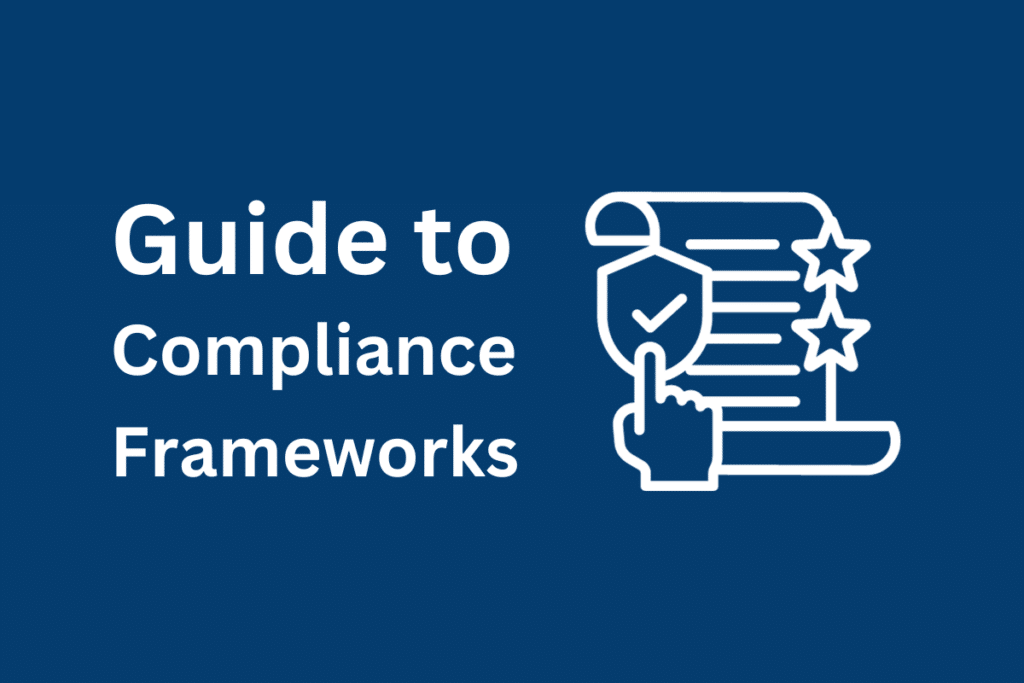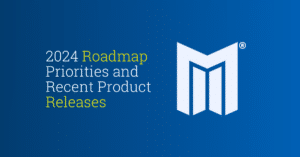Whether you’re in the digital health sector or any other industry handling sensitive data, adhering to compliance standards shows trust and integrity.
This is where a compliance framework becomes an invaluable tool. In this guide, we will explain what a compliance framework is and how you can implement it. We will also mention some essential compliance frameworks you need to know as a digital health business.
What is a Compliance Framework?
A compliance framework is a set of rules and practices that help businesses follow laws, meet industry rules, and reach their goals. It includes guidelines, policies, ways to control operations, and best practices for employee training and risk assessments.
Not paying enough attention to these compliance rules can cause you to lose business deals and harm your company’s reputation.
Remember, compliance rules keep changing. Your startup needs to stay alert and adapt to new regulations from within the US and other countries.
Sometimes, you might need different compliance steps for other places or situations. For example, you might require one set of rules for keeping patient data safe in the US and a different one for Canada.
- A compliance framework ensures that a company follows legal and industry standards.
- It helps protect sensitive information, like patient health records.
- It guides a company in meeting business goals ethically and legally.
- It reduces the risk of legal issues and financial losses for the company.
- It builds trust with clients and partners by showing commitment to compliance and ethics.
Types of Compliance Frameworks
Let’s look at common compliance frameworks and how they help your digital health business:
Healthcare Compliance Frameworks
Healthcare compliance frameworks ensure your digital health business handles sensitive health data responsibly and adheres to healthcare laws and regulatory requirements.
For example, if your startup develops a health app, you must ensure it keeps patient information secure and shares it only with authorized parties. This can be done using HIPAA compliance software.
HIPAA and HITECH are common examples of healthcare compliance frameworks.
How Does it Help?
- They offer healthcare-specific rules for data security, as required by law
- They build trust among your customers and partners
- They create uniform practices in healthcare for equal treatment, clear communication, and keeping patient data private
Data Compliance Frameworks
Data compliance frameworks are all about keeping consumer data safe and secure. This includes customer details, their intellectual properties, or private conversations within your company.
For example, the General Data Protection Regulation (GDPR) is a set of rules that helps protect personal information for people in the European Union. Similarly, the California Consumer Privacy Act (CCPA) offers consumers in California rights regarding how their personal information is collected and used by businesses.
How Does it Help?
- It gives clear rules for collecting, storing, and managing data ethically, especially for global operations.
- It helps companies respect and protect consumers’ data privacy and control rights.
- It outlines specific steps for responding to data breaches and security issues.
Cybersecurity Compliance Frameworks
These frameworks protect your digital health startup’s online systems from cyber attacks, data breaches, and unauthorized access. They’re like a shield for your company’s digital information.
A well-known example is System and Organization Controls 2 (SOC 2). SOC 2 lays out rules for handling customer data safely with a strong cybersecurity program. It focuses on five key areas: security, availability, processing integrity, confidentiality, and privacy.
How Does it Help?
- It sets up decisive security actions to guard against online threats.
- It includes regular checks to ensure the company keeps following the rules and stays secure.
- It boosts a company’s good name and customer trust by meeting a recognized standard.
Benefits of Implementing a Compliance Framework
Here are the advantages of implementing a compliance framework in your organization:
Enhanced Data Security
When your digital health startup uses a solid compliance framework like HIPAA or PIPEDA, it steps up healthcare data security.
HIPAA, for example, has strict regulatory standards for keeping Protected Health Information (PHI) safe. Healthcare companies can significantly lower the risk of expensive data breaches by following those rules in their daily operations.
Standardization
Compliance frameworks like HIPAA and ISO give your digital health startup a clear and consistent way to handle patient data and healthcare procedures.
Companies that follow compliance frameworks experience a boost in operational efficiency. By implementing these structured guidelines, businesses can streamline their processes, ensure consistency in handling data, and maintain high-quality standards in their services.
Consumer Trust
Following HIPAA and GDPR rules acts like a seal of trust for your patients. It shows them that your business handles their data safely and responsibly. Patients are more likely to trust your services if you’re GDPR or HIPAA-compliant.
Facilitation of International Business Operations
When healthcare businesses stick to international compliance standards, they can run their operations more smoothly across different countries.
For example, if your startup complies with GDPR, you’re responsible for data protection within the European Union. This makes it easier to transfer data and do business across international borders.
How to Choose the Right Compliance Framework?
Below are some critical factors in choosing the proper compliance framework:
Business Objectives and Scope
Consider whether your healthcare startup will operate locally or internationally. Is your target audience only in the US or around the world? Different compliance frameworks are designed for different regions and industry-specific rules.
For instance, if your customers are based in the European Union, following GDPR rules becomes crucial.
Examples:
- HIPAA for U.S.-based healthcare apps
- GDPR for apps catering to European markets
- PIPEDA for personal data protection in Canada
Company Size
Choosing the right compliance framework also depends on the technology your startup uses and its size. It’s important to pick a framework that aligns with your current tech setup or be ready to invest in necessary updates.
Examples:
- Small startups: SOC 2 Type 1, which is easier to implement at a point in time.
- Larger, Established firms: SOC 2 Type 2, requiring a more extensive audit and implementation process over a period of time.
Services Your Organization Provides
Choosing the right compliance framework depends on the type of services your healthcare startup offers. It’s not a one-size-fits-all situation.
You need to consider your company’s size, industry focus, and the nature of the data you handle.
You may need to adhere to several compliance frameworks if your business provides multiple services. Take Salesforce as an example; their compliance portfolio includes SOC 2, HIPAA, GDPR, ISO 27001, and PCI DSS, among others.
Examples:
- Healthcare or Insurance Sector: HIPAA is necessary.
- Data Management and Cloud Services: SOC 2 is a basic requirement.
- Credit Card Transactions: Add PCI DSS to SOC 2.
Handling Multiple Frameworks
Many compliance frameworks have similar requirements, offering a great chance to save time and reduce costs.
An intelligent way to do this is using healthcare compliance software like MedStack. These tools can automatically apply controls relevant to multiple frameworks, making it easier to manage compliance across different standards simultaneously.
Examples:
For instance, SOC 2 and ISO policy frameworks share similarities in several controls, such as:
- Physical security measures
- Access management for employees
- Basic security training requirements
- HR processes like onboarding and employee termination
Steps to Implement a Compliance Framework
Implementing a compliance process can be broken down into the following actionable steps.
Perform a Gap Analysis
After selecting a suitable framework, the first step is to compare your existing controls and practices against the framework’s rules. This is what is called a “gap analysis.” It helps you spot where your current approach needs to meet the framework’s standards.
Consider using compliance software that’s specifically designed for this purpose. Many of these tools come with a content registry with various compliance requirements.
Remediate the Gaps
Once you identify where your practices don’t meet the required standards, your next move is to fix these gaps. This might mean putting in new measures or strengthening your existing ones.
The goal is to ensure your procedures fully meet the standards of your chosen compliance framework.
Review and Confirm Compliance
After making changes, thoroughly review your compliance program to ensure you’ve covered everything. This isn’t just a one-off task. Regular reviews are important to keep your organization compliant over time, adapting as needed.
Continuous Monitoring
Compliance doesn’t end with implementation. Ongoing monitoring, especially in the field of risk assessment, is crucial. This is especially true in healthcare, where rules often change, and protecting patient data and privacy is always the utmost priority.
MedStack’s Compliance Solutions
MedStack’s platform is tailored to make healthcare compliance less complicated. It’s an excellent tool for healthcare organizations and startups, offering features that streamline compliance processes, particularly with HIPAA.
Key Features:
- Built-in Security Controls: MedStack has security features and controls aligning with various regulatory frameworks.
- Third-party Validation: The platform’s solutions are reinforced with third-party validation from the top payers and providers in North America.
- Security Questionnaires: MedStack also offers a comprehensive compliance program that includes ready-to-use solutions for security assessments.
- Inheritable Policies: Adopt and maintain compliance with minimal disruption to current operations.
Conclusion
Compliance is more than just a box to check or an obstacle to navigate; it’s a foundational aspect of running a successful healthcare business.
Organizations that strongly emphasize efficiently managing their compliance frameworks gain a significant advantage over their competitors.
Are you looking to simplify the compliance process for your healthcare business? MedStack is here to help. Start transforming your compliance strategy with MedStack. Book a free demo today!





